Elliott D. Kaplan, Christopher Hegarty1580538940, 9781580538947
Table of contents :
Contents……Page 6
Preface xv……Page 14
Acknowledgments xvii……Page 16
1.1 Introduction 1……Page 17
1.2 Condensed GPS Program History 2……Page 18
1.3 GPS Overview 3……Page 19
1.3.2 SPS 4……Page 20
1.5 GALILEO Satellite System 6……Page 21
1.6 Russian GLONASS System 7……Page 24
1.7 Chinese BeiDou System 8……Page 25
1.9 Markets and Applications 10……Page 26
1.9.1 Land 11……Page 27
1.9.2 Aviation 12……Page 28
1.9.3 Space Guidance 13……Page 29
1.10 Organization of the Book 14……Page 30
References 19……Page 35
2.1.1 Two-Dimensional Position Determination 21……Page 37
2.1.2 Principle of Position Determination Via Satellite-Generated Ranging Signals 24……Page 40
2.2 Reference Coordinate Systems 26……Page 42
2.2.1 Earth-Centered Inertial Coordinate System 27……Page 43
2.2.2 Earth-Centered Earth-Fixed Coordinate System 28……Page 44
2.2.3 World Geodetic System 29……Page 45
2.2.4 Height Coordinates and the Geoid 32……Page 48
2.3.1 Orbital Mechanics 34……Page 50
2.3.2 Constellation Design 43……Page 59
2.4 Position Determination Using PRN Codes 50……Page 66
2.4.1 Determining Satellite-to-User Range 51……Page 67
2.4.2 Calculation of User Position 54……Page 70
2.5 Obtaining User Velocity 58……Page 74
2.6.1 UTC Generation 61……Page 77
2.6.3 Receiver Computation of UTC (USNO) 62……Page 78
References 63……Page 79
3.1.1 Space Segment Overview 67……Page 83
3.2 Space Segment Description 68……Page 84
3.2.1 GPS Satellite Constellation Description 69……Page 85
3.2.3 Space Segment Phased Development 71……Page 87
3.3 Control Segment 87……Page 103
3.3.1 Current Configuration 88……Page 104
3.3.2 CS Planned Upgrades 100……Page 116
3.4.1 GPS Set Characteristics 103……Page 119
3.4.2 GPS Receiver Selection 109……Page 125
References 110……Page 126
4.2.1 Modulation Types 113……Page 129
4.2.2 Multiplexing Techniques 115……Page 131
4.2.3 Signal Models and Characteristics 116……Page 132
4.3.1 Frequencies and Modulation Format 123……Page 139
4.3.2 Power Levels 133……Page 149
4.3.3 Autocorrelation Functions and Power Spectral Densities 135……Page 151
4.3.4 Cross-Correlation Functions and CDMA Performance 140……Page 156
4.4 Navigation Message Format 142……Page 158
4.5.1 L2 Civil Signal 145……Page 161
4.5.2 L5 147……Page 163
4.5.3 M Code 148……Page 164
References 150……Page 166
5.1 Overview 153……Page 169
5.2 GPS Receiver Code and Carrier Tracking 155……Page 171
5.2.1 Predetection Integration 158……Page 174
5.2.2 Baseband Signal Processing 159……Page 175
5.2.3 Digital Frequency Synthesis 161……Page 177
5.2.4 Carrier Aiding of Code Loop 162……Page 178
5.3 Carrier Tracking Loops 164……Page 180
5.3.1 Phase Lock Loops 165……Page 181
5.3.2 Costas Loops 166……Page 182
5.3.3 Frequency Lock Loops 170……Page 186
5.4 Code Tracking Loops 173……Page 189
5.5 Loop Filters 179……Page 195
5.6 Measurement Errors and Tracking Thresholds 183……Page 199
5.6.1 PLL Tracking Loop Measurement Errors 184……Page 200
5.6.2 FLL Tracking Loop Measurement Errors 192……Page 208
5.6.3 C/A and P(Y) Code Tracking Loop Measurement Errors 194……Page 210
5.6.4 Modernized GPS M Code Tracking Loop Measurement Errors 199……Page 215
5.7 Formation of Pseudorange, Delta Pseudorange, and Integrated Doppler 200……Page 216
5.7.1 Pseudorange 201……Page 217
5.7.2 Delta Pseudorange 216……Page 232
5.7.3 Integrated Doppler 218……Page 234
5.8 Signal Acquisition 219……Page 235
5.8.1 Tong Search Detector 223……Page 239
5.8.2 M of N Search Detector 227……Page 243
5.8.3 Direct Acquisition of GPS Military Signals 229……Page 245
5.9 Sequence of Initial Receiver Operations 231……Page 247
5.10 Data Demodulation 232……Page 248
5.11.2 Phase Lock Detector with Optimistic and Pessimistic Decisions 233……Page 249
5.12 Use of Digital Processing 235……Page 251
5.13 Considerations for Indoor Applications 237……Page 253
5.14 Codeless and Semicodeless Processing 239……Page 255
References 240……Page 256
6.2 Radio Frequency Interference 243……Page 259
6.2.1 Types and Sources of RF Interference 244……Page 260
6.2.2 Effects of RF Interference on Receiver Performance 247……Page 263
6.2.3 Interference Mitigation 278……Page 294
6.3 Multipath 279……Page 295
6.3.1 Multipath Characteristics and Models 281……Page 297
6.3.2 Effects of Multipath on Receiver Performance 285……Page 301
6.3.3 Multipath Mitigation 292……Page 308
6.4 Ionospheric Scintillation 295……Page 311
References 297……Page 313
7.1 Introduction 301……Page 317
7.2 Measurement Errors 302……Page 318
7.2.1 Satellite Clock Error 304……Page 320
7.2.2 Ephemeris Error 305……Page 321
7.2.3 Relativistic Effects 306……Page 322
7.2.4 Atmospheric Effects 308……Page 324
7.2.6 Multipath and Shadowing Effects 319……Page 335
7.2.7 Hardware Bias Errors 320……Page 336
7.2.8 Pseudorange Error Budgets 321……Page 337
7.3.1 Satellite Geometry and Dilution of Precision in GPS 322……Page 338
7.3.2 Accuracy Metrics 328……Page 344
7.3.3 Weighted Least Squares (WLS) 332……Page 348
7.3.4 Additional State Variables 333……Page 349
7.4 GPS Availability 334……Page 350
7.4.1 Predicted GPS Availability Using the Nominal 24-Satellite GPS Constellation 335……Page 351
7.4.2 Effects of Satellite Outages on GPS Availability 337……Page 353
7.5 GPS Integrity 343……Page 359
7.5.2 Sources of Integrity Anomalies 345……Page 361
7.5.3 Integrity Enhancement Techniques 346……Page 362
7.6 Continuity 360……Page 376
7.7 Measured Performance 361……Page 377
References 375……Page 391
8 Differential GPS 379……Page 395
8.2.1 Satellite Clock Errors 381……Page 397
8.2.2 Ephemeris Errors 382……Page 398
8.2.3 Tropospheric Errors 384……Page 400
8.2.4 Ionospheric Errors 387……Page 403
8.2.5 Receiver Noise and Multipath 390……Page 406
8.3.1 Local-Area DGPS 391……Page 407
8.3.2 Regional-Area DGPS 394……Page 410
8.3.3 Wide-Area DGPS 395……Page 411
8.4 Carrier-Based Techniques 397……Page 413
8.4.1 Precise Baseline Determination in Real Time 398……Page 414
8.4.2 Static Application 418……Page 434
8.4.3 Airborne Application 420……Page 436
8.4.4 Attitude Determination 423……Page 439
8.5.1 Version 2.3 425……Page 441
8.5.2 Version 3.0 428……Page 444
8.6 Examples 429……Page 445
8.6.2 Carrier Based 450……Page 466
References 454……Page 470
9.1 Overview 459……Page 475
9.2.1 GPS Receiver Performance Issues 460……Page 476
9.2.2 Inertial Sensor Performance Issues 464……Page 480
9.2.3 The Kalman Filter 466……Page 482
9.2.4 GPSI Integration Methods 470……Page 486
9.2.5 Reliability and Integrity 488……Page 504
9.2.6 Integration with CRPA 489……Page 505
9.3.1 Introduction 491……Page 507
9.3.2 Review of Available Sensor Technology 496……Page 512
9.3.3 Sensor Integration Principles 515……Page 531
9.4 Network Assistance 522……Page 538
9.4.1 Historical Perspective of Assisted GPS 526……Page 542
9.4.2 Requirements of the FCC Mandate 528……Page 544
9.4.3 Total Uncertainty Search Space 535……Page 551
9.4.4 GPS Receiver Integration in Cellular Phones—Assistance Data from Handsets 540……Page 556
9.4.5 Types of Network Assistance 543……Page 559
References 554……Page 570
10.2 GALILEO Services and Performance 559……Page 575
10.2.1 Open Service (OS) 560……Page 576
10.2.4 Public Regulated Service (PRS) 562……Page 578
10.3.1 Frequencies and Signals 563……Page 579
10.3.2 Modulation Schemes 565……Page 581
10.3.3 SAR Signal Plan 576……Page 592
10.4.1 Signal in Space 577……Page 593
10.4.3 Time Reference Frame 578……Page 594
10.5 System Architecture 579……Page 595
10.5.1 Space Segment 581……Page 597
10.5.2 Ground Segment 585……Page 601
10.6 GALILEO SAR Architecture 591……Page 607
10.7 GALILEO Development Plan 592……Page 608
References 594……Page 610
11.1.2 Program Overview 595……Page 611
11.1.4 Constellation and Orbit 597……Page 613
11.1.5 Spacecraft Description 599……Page 615
11.1.6 Ground Support 602……Page 618
11.1.7 User Equipment 604……Page 620
11.1.8 Reference Systems 605……Page 621
11.1.9 GLONASS Signal Characteristics 606……Page 622
11.1.10 System Accuracy 611……Page 627
11.1.11 Future GLONASS Development 612……Page 628
11.1.12 Other GLONASS Information Sources 614……Page 630
11.2.1 Introduction 615……Page 631
11.2.3 Program History 616……Page 632
11.2.6 Spacecraft 617……Page 633
11.2.7 RDSS Service Infrastructure 618……Page 634
11.2.8 RDSS Navigation Services 621……Page 637
11.2.9 RDSS Navigation Signals 622……Page 638
11.2.11 Future Developments 623……Page 639
11.3.2 Program Overview 625……Page 641
11.3.4 Constellation and Orbit 626……Page 642
11.3.5 Spacecraft Development 627……Page 643
11.3.9 Navigation Services and Signals 628……Page 644
11.3.11 Future Development 629……Page 645
References 630……Page 646
12.1 GNSS: A Complex Market Based on Enabling Technologies 635……Page 651
12.1.1 Market Scope, Segmentation, and Value 638……Page 654
12.1.2 Unique Aspects of GNSS Market 639……Page 655
12.1.3 Market Limitations, Competitive Systems, and Policy 640……Page 656
12.2 Civil Navigation Applications of GNSS 641……Page 657
12.2.1 Marine Navigation 642……Page 658
12.2.2 Air Navigation 645……Page 661
12.2.3 Land Navigation 646……Page 662
12.3 GNSS in Surveying, Mapping, and Geographical Information Systems 647……Page 663
12.3.2 Mapping 648……Page 664
12.3.3 GIS 649……Page 665
12.6 Differential Applications and Services 650……Page 666
12.6.2 Other Differential Systems 651……Page 667
12.7 GNSS and Telematics and LBS 652……Page 668
12.9 Government and Military Applications 654……Page 670
12.9.1 Military User Equipment—Aviation, Shipboard, and Land 655……Page 671
12.9.2 Autonomous Receivers—Smart Weapons 656……Page 672
12.10 User Equipment Needs for Specific Markets 657……Page 673
12.11 Financial Projections for the GNSS Industry 660……Page 676
References 661……Page 677
Appendix A:Least Squares and Weighted Least Squares Estimates 663……Page 679
Reference 664……Page 680
B.2 Frequency Standard Stability 665……Page 681
B.3.2 Hadamard Variance 667……Page 683
References 668……Page 684
C.2 Free-Space Propagation Loss 669……Page 685
References 673……Page 689
About the Authors 675……Page 691
Index 683……Page 699
Mobile Communications Library……Page 720
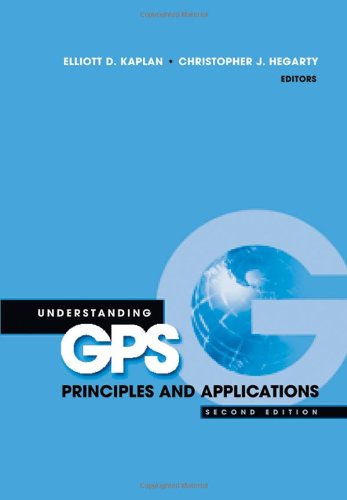


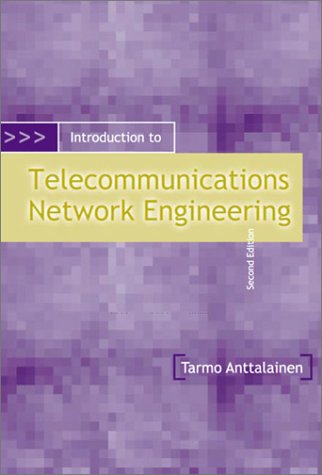
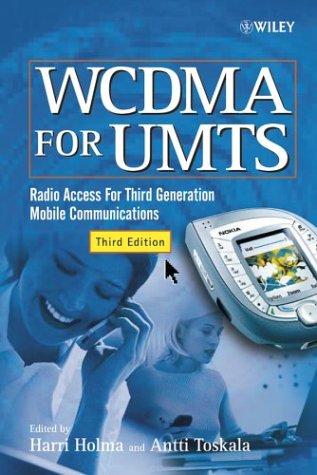
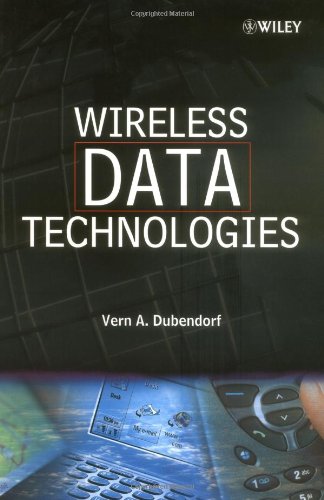
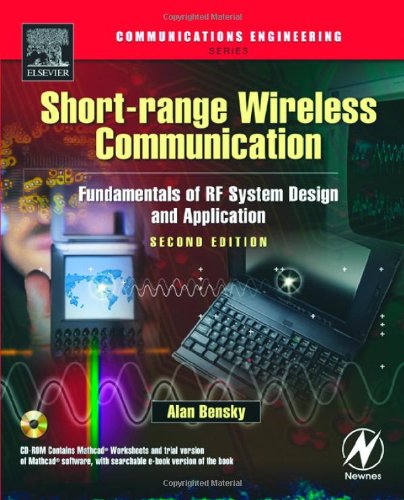
Reviews
There are no reviews yet.